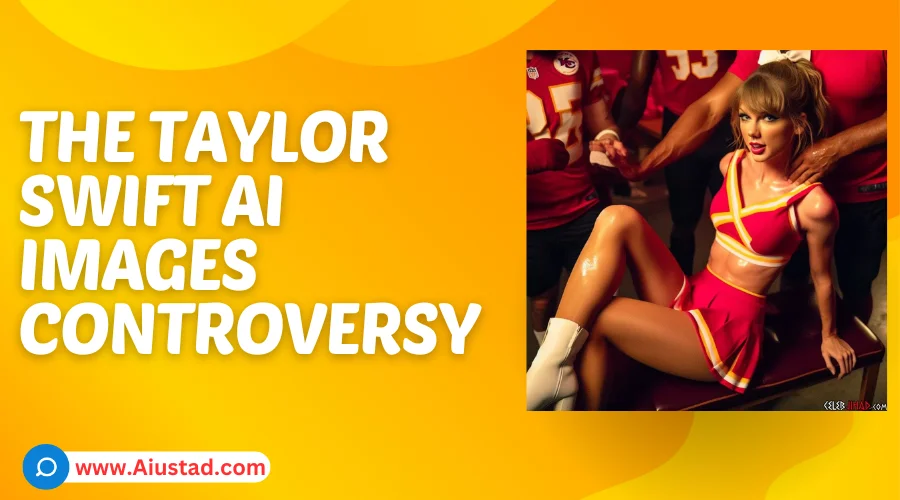The internet has been buzzing with controversial discussions regarding the recent emergence of explicit AI-generated images of Taylor Swift. This highly concerning development has shed light on the alarming implications of deepfake technology. In this comprehensive guide, we will delve into the Taylor Swift AI controversy, exploring the nature of deepfakes, the impact of this specific incident, and what can be done to address and mitigate the associated risks.
What are Deepfakes and AI-Generated Images?
In order to fully comprehend the Taylor Swift AI controversy, it’s essential to understand the underlying technology. Deepfakes are manipulated videos or images that utilize AI to create deceptive yet convincingly realistic media featuring real individuals. On the other hand, AI image generators are tools capable of producing images from text prompts, leveraging deep learning algorithms trained on extensive datasets. The fusion of these technologies has resulted in the creation of alarming deepfake content, posing significant challenges for individuals such as Taylor Swift and sparking widespread concern across social media platforms.
The Taylor Swift AI Controversy: A Reckoning for Deepfake Harms
The emergence of explicit deepfake images of Taylor Swift has triggered outrage among her fanbase and the wider internet community. These illicitly generated images, seemingly produced with the deliberate intent to sexualize Swift, rapidly proliferated across various online platforms, including Reddit, Twitter, and Instagram. This unsettling inundation of nonconsensual fake content has reignited apprehension about the implications of deepfakes, bringing to the forefront the profound privacy and s*xual abuse concerns associated with this technology.
Understanding the Implications
It’s crucial to acknowledge the gravity of the Taylor Swift AI controversy, as it underscores the severe privacy violations and profound harm that deepfakes can inflict upon individuals. By exploiting AI image generators trained to target specific public figures, malicious entities can perpetrate egregious infringements upon their autonomy and dignity, laying bare the unmistakable threat posed by deepfake technology.
Deconstructing the Offensive Imagery
The offensive deepfake content in question portrays Taylor Swift in a vulnerable and nonconsensual s*xual context, unequivocally breaching her rights and perpetuating a distressing narrative of abuse and exploitation. This reprehensible instance not only deeply distresses the celebrity in question but also sets a disconcerting precedent for the potential victimization of other public figures and ordinary individuals alike.
The Role of Social Media Platforms in Dissemination
Crucially, the rapid spread of these unauthorized and deeply harmful images across social media platforms has underscored the fundamental need for proactive measures to address and mitigate the dissemination of deepfake content. As social media networks grapple with the challenges posed by such reprehensible content, it becomes increasingly clear that concerted action is imperative to protect the rights and well-being of individuals like Taylor Swift.
Addressing the Long-Term Ramifications
The enduring impact of the Taylor Swift AI controversy extends beyond the initial dissemination of these distressing images, evoking profound concerns about the enduring presence of the AI model responsible for their creation. As efforts to remove and report the offensive material intensify, it becomes apparent that the persistent existence of the AI model poses a sustained threat, perpetuating the distressing potential for the continued production of nonconsensual deepfake content.
Effective Responses and Legislative Measures
In response to the gravity of the situation, it is essential to consider effective strategies for addressing the challenges posed by deepfakes. Attempts to legislate against the production and dissemination of deepfake content represent a crucial facet of these efforts, engendering crucial legal frameworks to counteract the pernicious impact of AI-generated content.
Anticipating and Mitigating Future Risks
Looking ahead, it is imperative to anticipate and mitigate the potential risks associated with deepfake technology. By proactively engaging with the multifaceted challenges posed by nonconsensual and deceptive media, it becomes possible to foster a more secure and equitable digital landscape, offering effective protections for public figures and individuals at large.
Key Takeaways
- Deepfakes and AI-generated images pose a significant threat to individual privacy and autonomy.
- The Taylor Swift AI controversy underscores the urgent need for proactive measures to counteract the dissemination of nonconsensual deepfake content.
- Legislative efforts are crucial in establishing robust frameworks to address and mitigate the pervasive harms perpetuated by deepfake technology.
- Continued vigilance and proactive engagement are essential in safeguarding against the pernicious effects of deepfake content.
Frequently Asked Questions
Q: What are deepfakes and their implications?
A: Deepfakes are manipulated videos or images that utilize AI to create deceptive yet convincingly realistic media. The implications of this technology include severe privacy violations and s*xual abuse concerns.
Q: How were the deepfake images of Taylor Swift generated?
A: An AI image generator was utilized to produce illicitly generated images, portraying Taylor Swift in a vulnerable and nonconsensual s*xual context.
